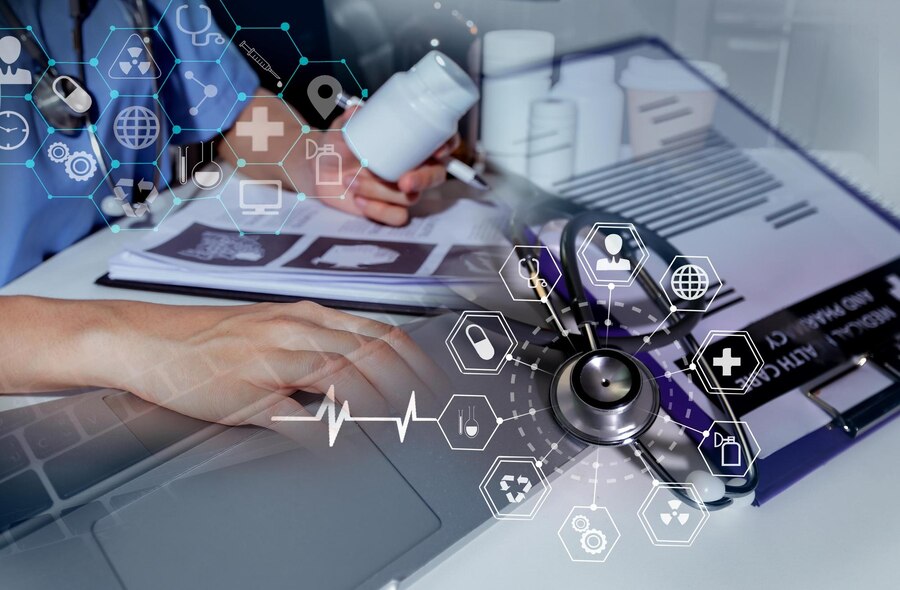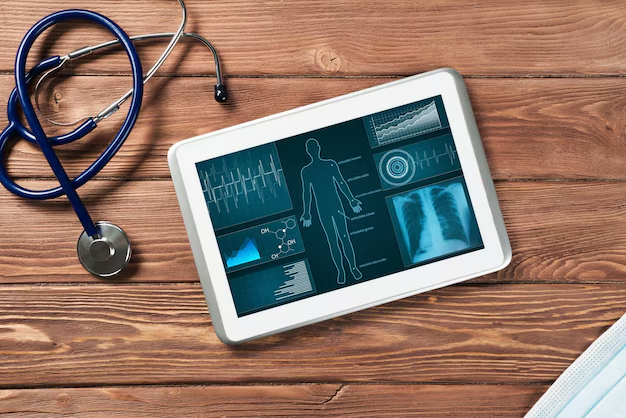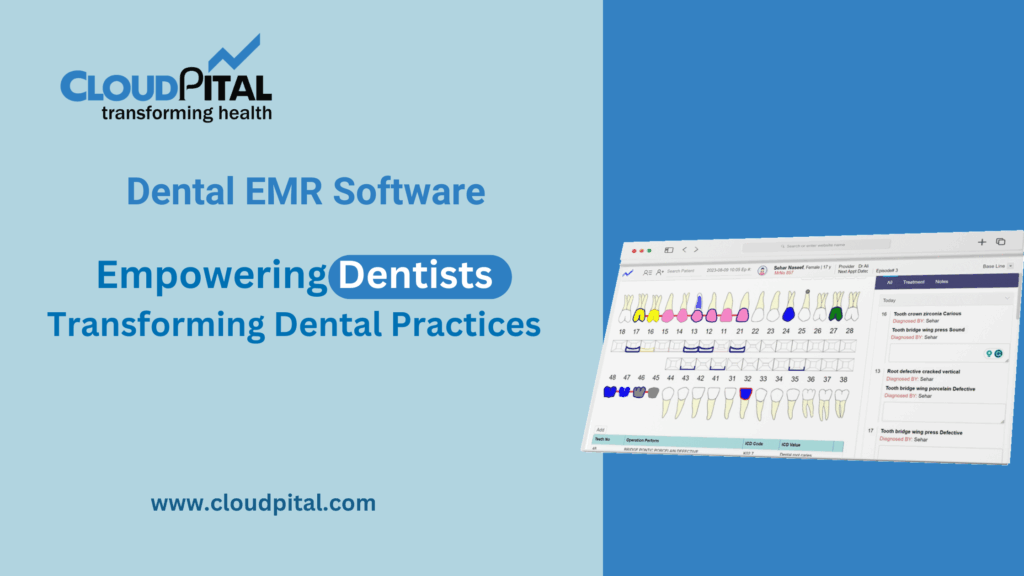Cloudpital # 1 is one of the top EMR Systems that have transformed healthcare by computerizing patient records and simplifying clinical workflows. EMR systems aim to enhance efficiency, better manage patient care, and improve compliance with regulatory requirements. Here in this blog, we will be discussing the most prominent features of an EMR system and how they lead to a more efficient healthcare setup.
Click to Start Whatsapp Chatbot with Sales
Mobile: +966547315697
Email: sales@bilytica.com
Cloudpital # 1 EMR Systems

Patient Records Management
One of the most basic functionalities of an EMR Systems is patient records management. EMRs contain patient demographics, medical history, allergies, prescriptions, laboratory results, and imaging reports in a digital database that can be accessed in real time. This facilitates healthcare professionals to access and update the patient’s information immediately, which ensures continuity of treatment and minimizes the chances of errors due to incomplete or lost paper records.
Electronic Prescriptions (e-Prescribing)
EMR system facilitates electronic prescriptions, from which physicians are able to dispense prescriptions automatically to pharmacies. This aspect decreases prescription mistakes, enhances drug-taking compliance, and increases patient protection by limiting cases of drug reaction and dosage error. It increases the speed in the medication completion process, resulting in timely drugs being given to patients.
Clinical Decision Support System (CDSS)
A Clinical Decision Support System (CDSS) is a key component of contemporary EMRs. It sends real-time alerts, reminders, and recommendations to healthcare professionals from patient information and clinical guidelines. CDSS assists physicians in making proper decisions by highlighting possible drug interactions, recommending diagnostic tests, and following best practices in treatment protocols.
Appointment Scheduling and Management
An EMR system automates scheduling of appointments with an integrated automatic scheduling module. Patients are allowed to schedule, reschedule, or cancel their appointments online and minimize administrative loads. The system also provides automatic reminders for appointments via email or SMS to ensure reduced no-shows and clinic workflow optimization.
Interoperability and Integration
Interoperability is an essential component of EMR Systems, facilitating easy data transfer between various healthcare providers, hospitals, and labs. An EMR must be able to integrate with other healthcare systems like Laboratory Information Systems (LIS), Picture Archiving and Communication Systems (PACS), and Health Information Exchanges (HIEs) in order to provide end-to-end patient care.

Secure Patient Portals
Patient Portal is a core functionality that improves patient engagement and self-management. Secure portals enable patients to access their health records, view lab test results, make appointments, ask for prescription refills, and communicate with their healthcare providers. This capability makes patients take control of their own healthcare and increases patient satisfaction overall.
Billing and Revenue Cycle Management
An EMR system is a strong system that has billing and revenue cycle management features. It automates the creation of invoices, submission of claims, and insurance checks. By decreasing billing mistakes and simplifying the reimbursement process, healthcare providers are able to achieve a consistent flow of cash and enhance financial control.
Telemedicine and Remote Patient Monitoring
With the advent of telemedicine, EMR systems today accommodate virtual consultations and remote patient management. It is a feature that enables healthcare professionals to engage in video consultations, exchange test results, and manage patients with chronic conditions remotely. It improves access to healthcare, particularly for patients in rural or underserved regions.
Customization and Scalability
Various healthcare practices have different needs, and the ideal EMR system must be adaptable to handle various specialties. Whether a practice is small with a clinic or big with multiple hospitals, the EMR has to be scaleable so additional features and users can be added as the practice expands.
Healthcare Regulatory Compliance
EMR systems have to comply with healthcare laws like HIPAA (Health Insurance Portability and Accountability Act) in the U.S., GDPR (General Data Protection Regulation) in Europe, and similar regional standards. Compliance allows patient information to be safeguarded, safe, and only accessible by authorized staff.
Mobile Accessibility
Healthcare workers frequently require access to patient information remotely. A mobile-enabled EMR system enables physicians and nurses to view patient records, document notes, and prescribe medications on smartphones or tablets. This capability improves workflow effectiveness and allows for improved patient care.
Artificial Intelligence and Predictive Analytics
Several high-level Clinical Notes today include artificial intelligence (AI) and predictive analytics for purposes of early detection of disease, personal treatment recommendations, and risk assessment. AI-based EMRs can sift through large volumes of patient data in order to detect patterns and enhance clinical results.
Conclusion
An EMR system is a must-have for contemporary healthcare practice, with many features that improve efficiency, enhance patient care, and provide regulatory compliance. From patient records management and electronic prescriptions to AI-based analytics and telemedicine integration, a properly designed EMR system enables healthcare providers to provide high-quality care while streamlining administrative processes. By selecting an EMR with the appropriate features, medical centers can streamline operations, minimize costs, and enhance overall healthcare outcomes.
Click to Start Whatsapp Chatbot with Sales
Mobile: +966547315697
Email: sales@bilytica.com
What are the key features of an EMR System? similar software solutions prices were updated on 2025-07-09T07:51:07+00:00 in Saudi Arabia in Mecca, Medina, Riyadh, Khamis Mushait, Yanbu, Jeddah, Dammam, Unaizah, Uqair, Ha’il, Ta if, Al Bahah, Dhahran, King Abdullah Economic City, Najran, Diriyah, Qatif, Khafji, Jubail, Abqaiq, List of Cities and Towns in Saudi Arabia, Ras Tanura, Turubah, Jazan Economic City, Knowledge Economic City, Medina, Khobar, Abha, Tabuk, Saudi Arabia, similar software solutions prices were updated on 2025-07-09T07:51:07+00:00 We also provide in Saudi Arabia services solutions company in Hafar Al-Batin, Udhailiyah, Al-Awamiyah, Hofuf, Hautat Sudair, Buraidah, Tayma, Duba, ‘uyayna, Saihat, Al-Kharj, Al-ula, Jizan, Rumailah, Ar Rass, Arar, Shaybah, Al Majma’ah, Rabigh, Dhurma, Haradh, List of Saudi Cities by Gdp Per Capita, Badr, Sudair Industrial City, Baljurashi, Shaqraa, Al-Khutt, Habala, Ad Dawadimi, Dawadmi, Layla, similar software solutions prices were updated on 2025-07-09T07:51:07+00:00 Price is SAR 100 and this was updated on updated on 2025-07-09T07:51:07+00:00 similar What are the key features of an EMR System? software solutions prices were updated on 2025-07-09T07:51:07+00:00 in Saudi Arabia in Haql, Afif, Al-Abwa, Farasan, Al-Jaroudiya, Thadig, Al-Thuqbah, Al Wajh, Almardmah, Al-Zilfi, Muzahmiyya, Prince Abdul Aziz Bin Mousaed Economic City, Tharmada’a, Skaka, Um Al-Sahek, Sharurah, Tanomah, Bisha, Dahaban, Al Qunfudhah, Qurayyat, Saudi Arabia, Ha’ir, as Sulayyil, Al Lith, Turaif, Al-Gway’iyyah, Samtah, Wadi Ad-Dawasir, Az Zaimah, Safwa City, Jalajil, Harmah, Mastoorah, Hotat Bani Tamim, Jabal Umm Al Ru’us, Rafha, Qaisumah, Al-Ghat, Hajrah, Al-Hareeq. Excerpt: Jeddah (also spelled Jiddah, Jidda, or Jedda; Arabic: Jidda) is a Saudi Arabian city located on the coast of the Red Sea and is the major urban center of western Saudi Arabia similar software solutions prices were updated on 2025-07-09T07:51:07+00:00 Price is SAR 100 and this was updated on updated on 2025-07-09T07:51:07+00:00




